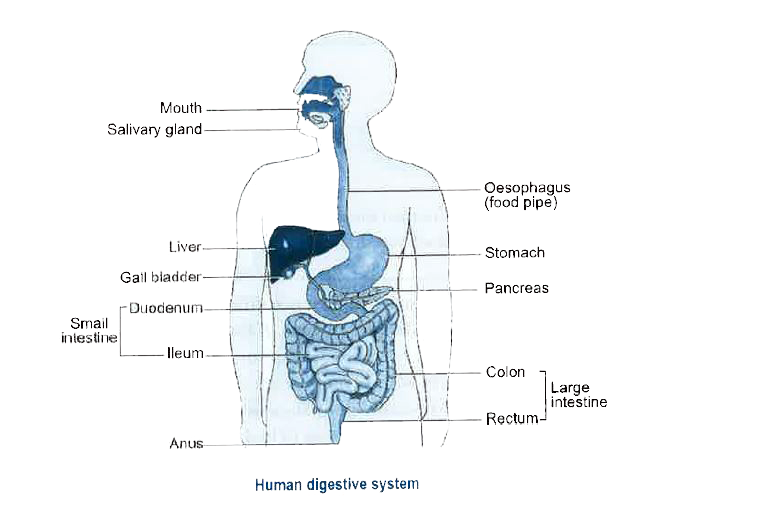Describe the process of digestion of food in human beings.
Text Solution

The various processes involved in the digestion of human beings are: (i) Ingestion: Through the help of mouth human beings ingest food. (ii) Digestion: The teeth helps in physical digestion of food. In mouth there are salivary glands, which secretes saliva, in which salivary amylase enzyme is present which digest the starch present in food into maltose sugar, i.e., the digestion of carbohydrate starts from mouth itself.
Mouth opens into a small funnel-shaped area called pharynx which leads to a long tube called oesophagus, whose wall is highly muscular. When the slightly digested food enters into oesophagus the contraction and expansion movement of its wall, takes place, which is known as peristaltic movement. This movement helps the food to move towards the stomach.
Usually, in oesophagus there is no digestion of food. From the oesophagus the food enters into the stomach. In the stomach there is secretion of gastric juices which is a mixture of hydrochloric acid, pepsin (protein digesting enzyme) and mucus. Now, the partially digested food enters from stomach into the small intestine’s wider part which is known as duodenum and the remaining part of the small intestine is termed as ileum. The duodenum, receives secretions of two glands, i.e., liver and pancreas. Liver secretes bile pigments and pancreas secretes pancreatic juice which digestes the proteins, carbohydrates and emulsified fats. Here the digestive enzymes are amylase, maltose and invertase for digesting the carbohydrates, trypsin for proteins and lipase for fats. Thus, food is completely digested in ileum part of small intestine. (ii) Absorption: Now, the food enters from duodenum into ileum part of small intestine where millions of finger-like projections known as villi are present which absorb the food. (iv) Assimilation: The blood carries the digested and dissolved food to all parts of the body, where it is assimilated into the cells which is used for obtaining energy as well as for growth and repair of the body. (v) Egestion: The undigested food enters into the large intestine’s wider part, where water is absorbed from the undigested food and the food becomes solid. Now, this solid undigested food enters the last part of large intestine known as rectum through which it moves out from the body.
|
Similar Questions
Describe the process of digestion of food in man .
View Solution(a) Draw a labelled diagram of the human digestive system. With the help of this diagram, describe the process of digestion of food in man (humans).
(b) Describe one way in which the small intestine is adapted for the absorption of digested food.
(c) What is the special name of the contraction and expansion movement which pushes the food further in our digestive tract (or alimentary canal) ?
View Solution
Knowledge Check
The process of digestion of food in humans begin in:
AStomachBfood pipeCmouthDsmall intestineThe process of digestion of food in human being does not take place at
AStomachBFood pipeCMouthDSmall intestineThe process of digestion in humans is completed in:
AOesophagusBSmall intestineCStomachDLarge intestine
Describe the process of digestion in man.
View SolutionDescribe the process of digestion of protein in stomach.
View SolutionDescribe the process of digestion of protein in stomach.
View SolutionDescribe the process of fertilization in human beings.
View SolutionDigestion of food in human starts from
View Solution
